We finally made it out onto the fjord today, which I guess is the official start of our field work!
This morning I worked with Svein Oland from the Norwegian Polar Institute, to get our boat ready. He was incredibly helpful in creating a mounting platform for the winch (to use to lower and raise the CTD) and the bathymetry setup. I was really impressed at his resourcefulness in gathering up the hardware we needed - after all, it’s not like you can go to Home Depot up here! After a couple of hours of work, we got it all mounted.
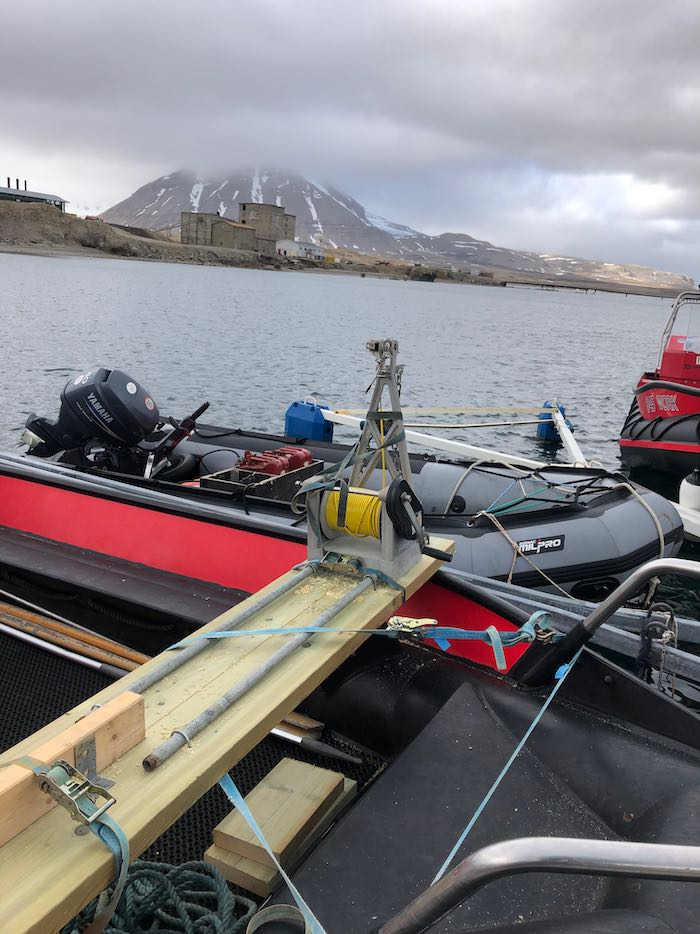 The mount Svein and I designed and built.
The mount Svein and I designed and built.
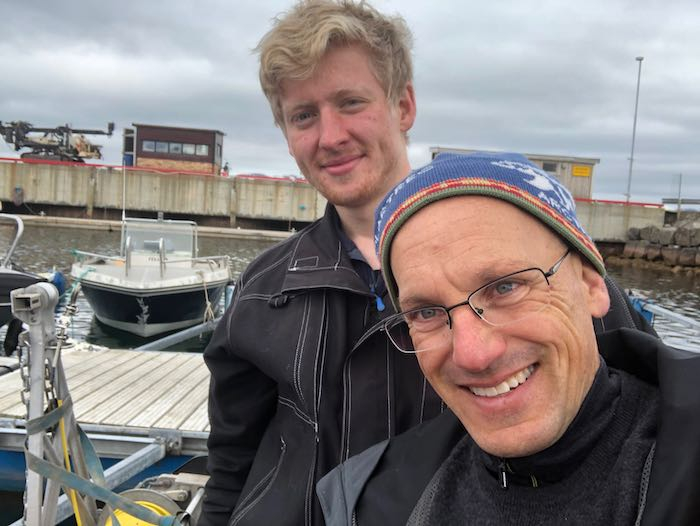 Svein and I pose for a selfie after our work on the boat is complete!
Svein and I pose for a selfie after our work on the boat is complete!
After lunch, I found out that my gun permit came through from the Norwegian government. This means that we are able to leave Ny Ålesund and go out on the boat!
We gathered up our stuff and walked down to the boat dock. Shout out to Jan Pettersen for giving us a very thorough orientation. Although Julie and I have driven these boats before, it’s been many years for both of us, so it was super helpful. Then we were off!
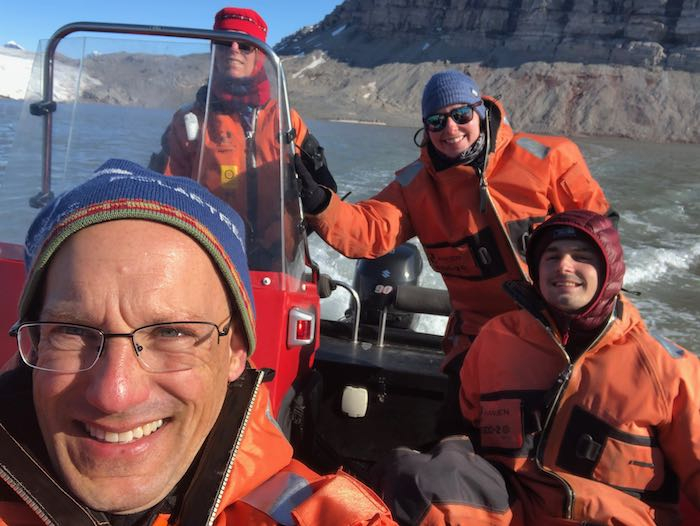 Our obligatory selfie out on the fjord!
Our obligatory selfie out on the fjord!
Our main goal today was to get the lay of the land - to scope out what the fjord looks like after so many years to help us plan out the next few weeks. It was shocking to see up close how much ice has disappeared. (In a later post I’ll show in more detail where the glacier front used to be and how far it has moved back in the past 10 years.)
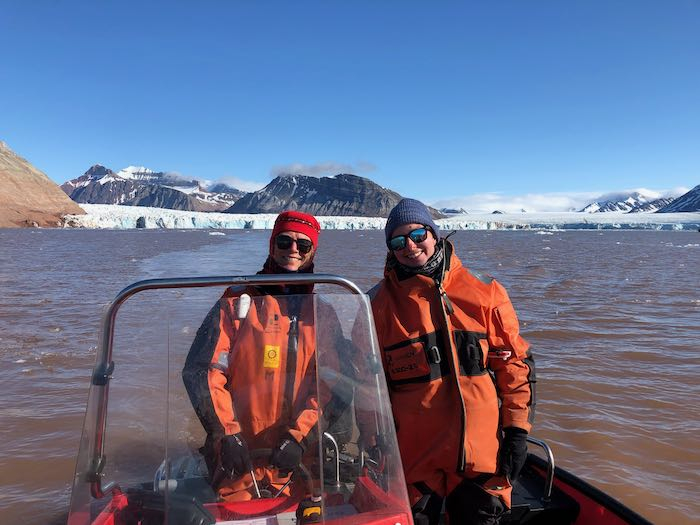 Julie and Kelly in the boat on our first trip out on the fjord.
Julie and Kelly in the boat on our first trip out on the fjord.
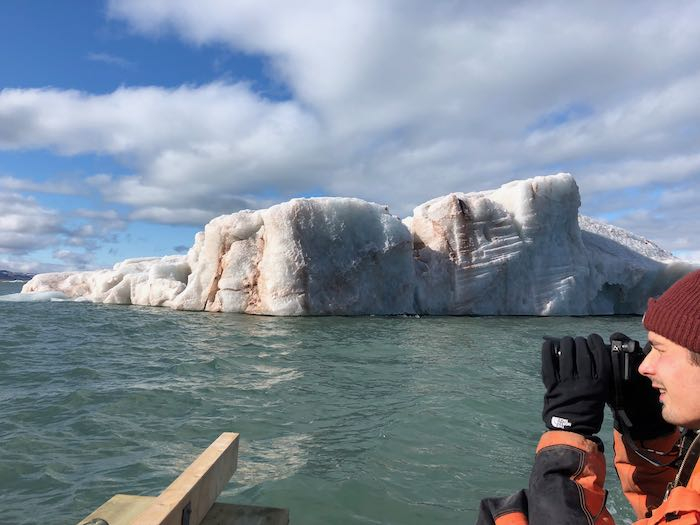 One of the many icebergs we saw on our way out to the glacier face.
One of the many icebergs we saw on our way out to the glacier face.
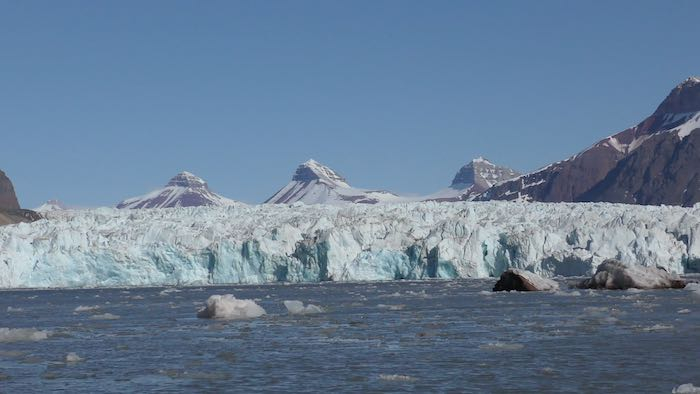 The face of Kronebreen glacier where we will be collecting our data.
The face of Kronebreen glacier where we will be collecting our data.
Check out this video with some clips of our first trip out on the fjord.
Another goal was to test out the drone. I got a chance to fly the drone back in the US, but this was my first time flying from a moving boat! It was a little nerve-wracking at first to try to land the drone on a moving target! But with Xander’s expert drone-catching skills we were in business!
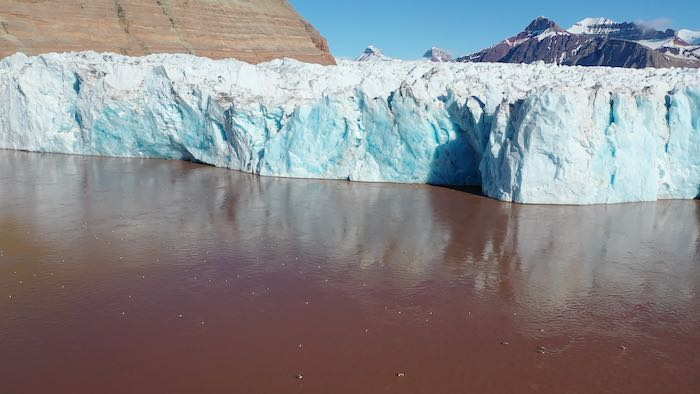 One of the shots I was able to take using my drone.
One of the shots I was able to take using my drone.
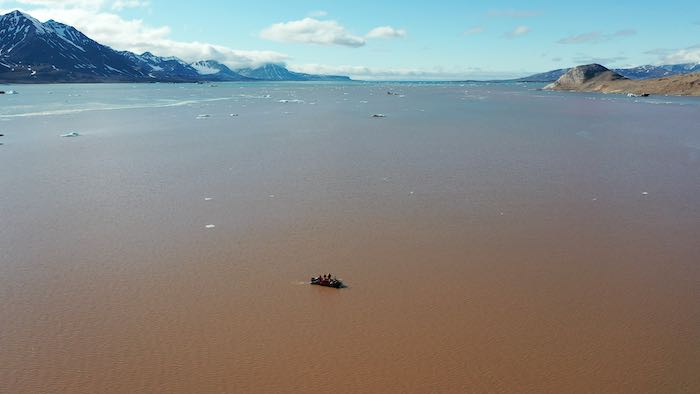 This is the view looking out from the glacier face. Since this was taken with the drone, you can see our boat in the foreground.
This is the view looking out from the glacier face. Since this was taken with the drone, you can see our boat in the foreground.
Check out this video shot using my drone. I need to work on my technique, but I think it was a good start!
We came back today incredibly happy to finally be starting our field work and getting a chance to see the glacier up close.
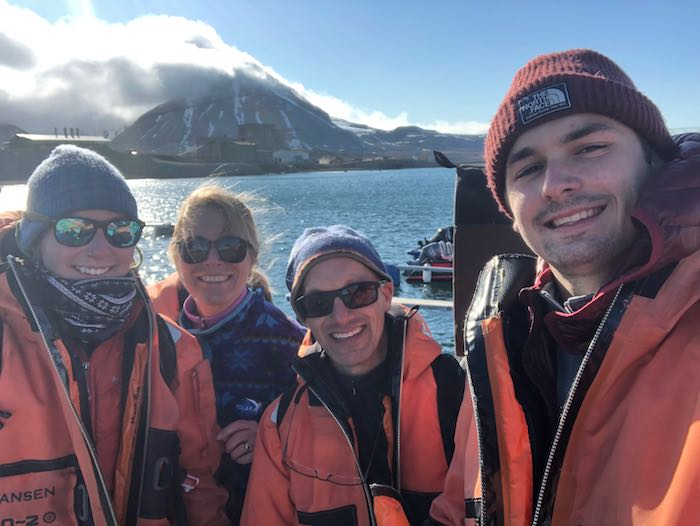 The team poses for a selfie after our first ride.
The team poses for a selfie after our first ride.

Comments
Add new comment